If you are looking for a healthy breakfast try this millet pongal recipe, to satisfy your taste buds and nutritional needs.
Estimated reading time: 5 minutes
Jump to:
What is Ven Pongal?
Ven Pongal, a popular South Indian dish typically served for breakfast, is a comfort food made with rice and moong dal (yellow lentils). It is savoury, spiced, and often served with coconut chutney or sambar.
However, as more people turn towards low-carb alternatives, the traditional pongal recipe gets a healthier makeover with barnyard millet. By substituting rice with barnyard millet, you can make pongal not only healthier but also packed with all the good nutrients.
- Low Glycemic Index: Unlike rice, which has a high glycemic index, barnyard millet has a low GI, making it suitable for regulating blood sugar levels.
- Rich in Fiber: Barnyard millet is an excellent source of dietary fibre, which helps improve digestion, prevents constipation, and aids in maintaining a healthy weight.
- High in Protein: Barnyard millet is a good source of plant-based protein, making it an ideal choice for vegetarians and vegans.
Ingredients You’ll Need
- Barnyard Millet also known as sama ke chawal. It is a small, nutrient-dense grain that belongs to the millet family.
- Yellow Moong (split yellow lentils)
- Fresh Ginger finely chopped to flavour the pongal.
- Hing (asafoetida) adds a delicious aroma and helps in digestion.
- Whole Black Peppercorns instead of powder are the highlight of pongal.
- Ghee to prepare the tadka. Vegans can use coconut or peanut oil.
- Cumin Seeds and Black Mustard Seeds for tempering and crunch.
- Cashew Nuts or peanuts for protein and nuttiness.
- Curry Leaves and Fresh Coriander Leaves.
How To Make Millet Pongal
Step 1: Roasting Moong Dal
- Start by dry roasting the yellow moong separately in a pan over low heat for 2-3 minutes until a pleasant aroma is released.
Step 2: Soak Millets and Lentil
- Rinse and soak barnyard millet in clean water for at least 4 – 5 hours.
- Rinse and soak roasted moong for 15 – 20 minutes.
Step 3: Pressure Cook
- Add the soaked millet, moong, ginger, asafoetida, salt, and black peppercorns in a pressure cooker.
- Add water, close the lid, and pressure cook over medium heat for 2 – 3 whistles or until both ingredients are soft and fully cooked. If you prefer a porridge-like consistency, add more water to achieve the desired texture.
- Allow the steam to release naturally from the pressure cooker.
Step 4: Tempering Pongal
- Heat the ghee in a small pan over medium heat.
- Add the cumin seeds, mustard seeds, curry leaves, and cashews. Let the spices sizzle for a few seconds, releasing their fragrant oils. If you’re using cashews, fry until golden brown.
- Pour the tempering over the cooked pongal, and gently stir to combine. Let the flavours meld for a couple of minutes on low heat.
Garnish with freshly chopped coriander leaves. Serve millet pongal with coconut chutney or sambar for a complete South Indian meal.
My Tried and True Tips
- Adjust Water Based on Consistency: Barnyard millet tends to absorb more water than rice, so keep an eye on the consistency while cooking. For a softer texture, add more water.
- Add Vegetables: If you prefer a more wholesome pongal, add chopped vegetables like carrots, peas, or beans while pressure cooking.
- Vegan Option: If you prefer a vegan pongal, replace ghee with coconut or peanut oil.
- Add More Spices: Feel free to experiment with other spices like cardamom, cinnamon, or cloves for a unique twist on the flavour.
More Millet Recipes
follow us on Youtube and Instagram for video recipes.
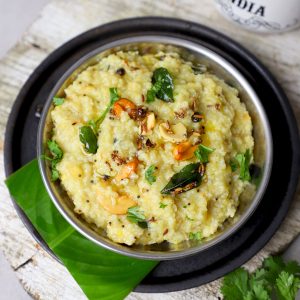
Millet Pongal Recipe
- Tadka Pan
Ingredients
- ⅓ Cup barnyard millet (sama rice)
- ¼ Cup yellow moong dal
- 1 teaspoon black peppercorns
- ¼ teaspoon hing (asafoetida)
- 1 inch ginger, chopped
- 1 teaspoon salt or to taste
- 2 Cup water
Ingredients For Tadka:
- 2 tablespoon ghee
- 1 teaspoon cumin seeds
- 1 teaspoon black mustard seeds (rai)
- 2 tablespoon chopped cashews
- 1 sprig curry leaves
Instructions
- Start by dry roasting the yellow moong separately in a pan over low heat for 2-3 minutes until a pleasant aroma is released.
- Rinse and soak barnyard millet in clean water for at least 4 – 5 hours.
- Rinse and soak roasted moong for 15 – 20 minutes.
- After the soaking time, add the millet, moong, ginger, asafoetida, salt, and black peppercorns in a pressure cooker.
- Add water, close the lid, and pressure cook over medium heat for 2 – 3 whistles or until both ingredients are soft and fully cooked. If you prefer a porridge-like consistency, add more water to achieve the desired texture.
- Allow the steam to release naturally from the pressure cooker.
- Heat the ghee in a small pan over medium heat.
- Add the cumin seeds, mustard seeds, curry leaves, and cashews. Let the spices sizzle for a few seconds, releasing their fragrant oils. If you’re using cashews, fry until golden brown.
- Pour the tempering over the cooked pongal, and gently stir to combine. Let the flavours meld for a couple of minutes on low heat.
- Garnish with freshly chopped coriander leaves.
- Serve millet pongal with coconut chutney or sambar for a complete South Indian meal.
Recipe Notes:
- Roasting moong is an optional step. Without roasting also you can make the pongal.
- Substitute barnyard millet with quinoa or any other variety of millet.

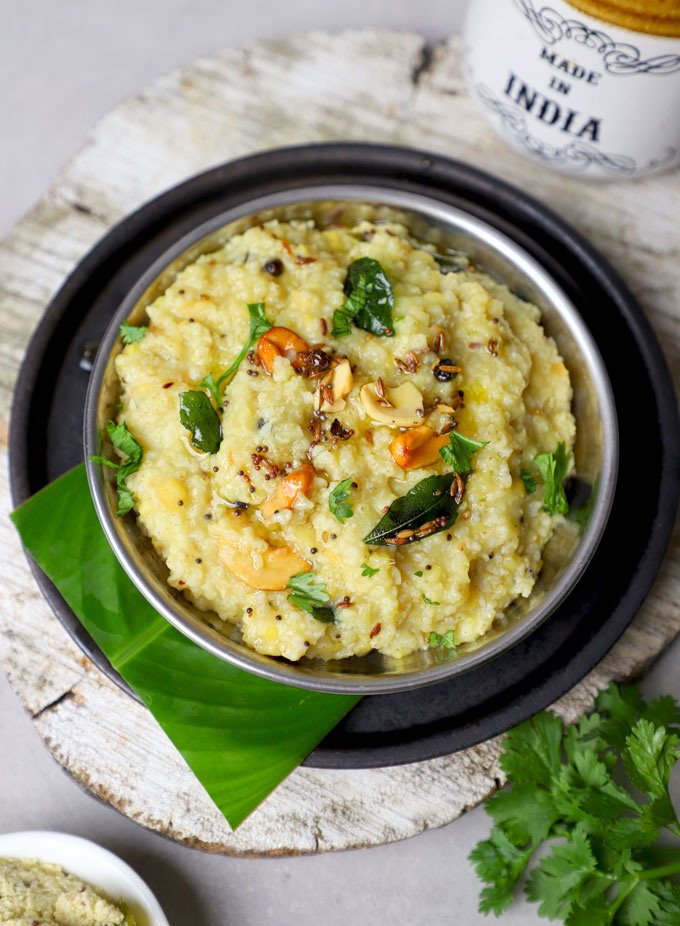
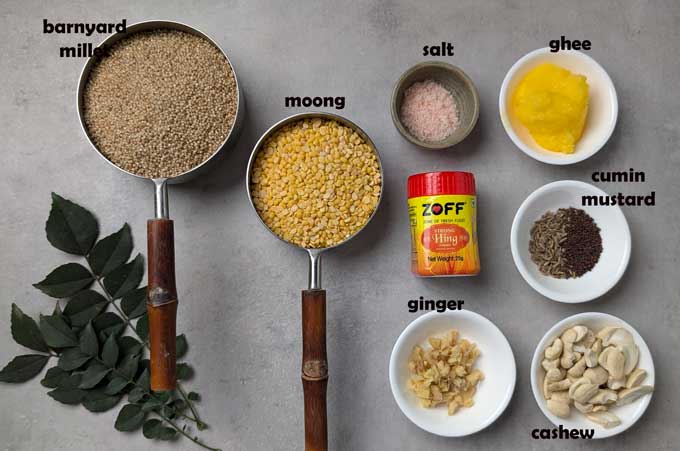
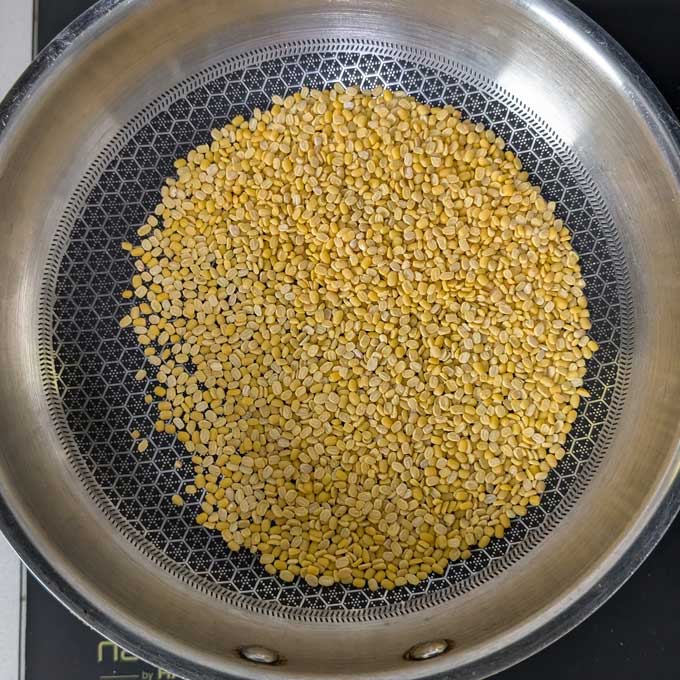
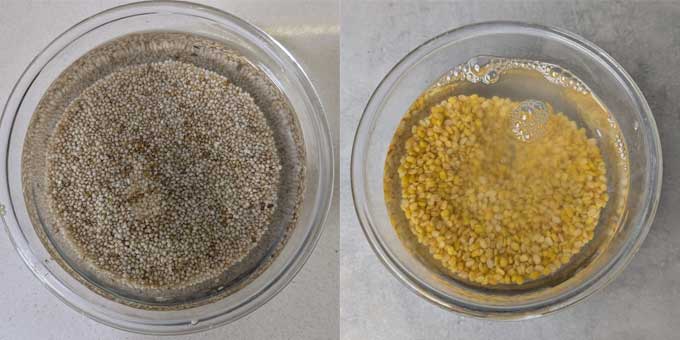
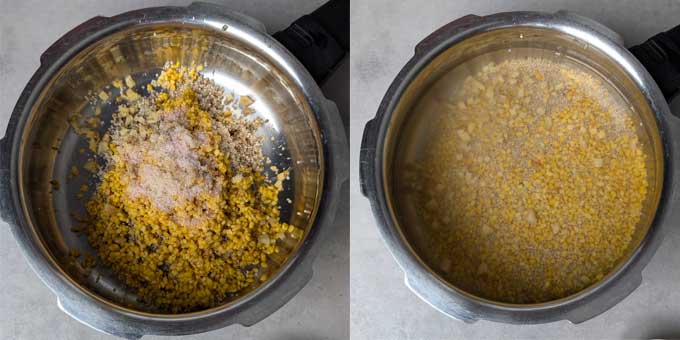
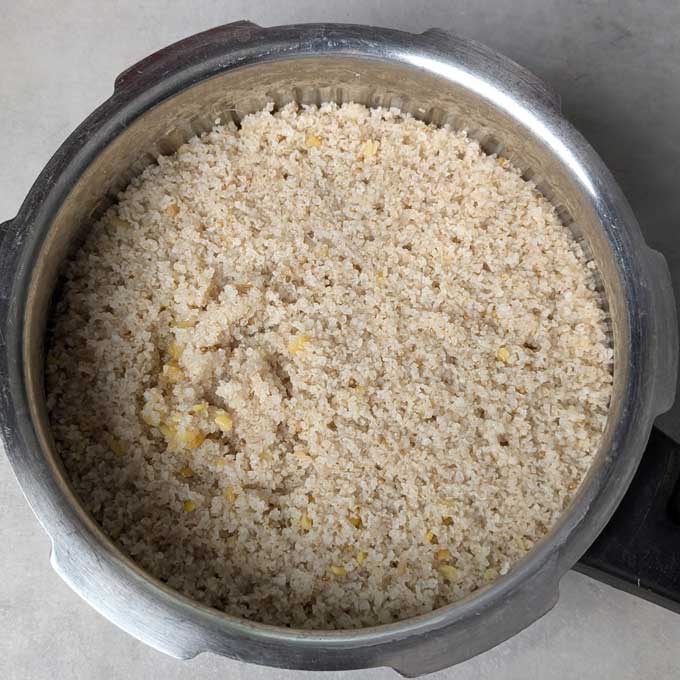
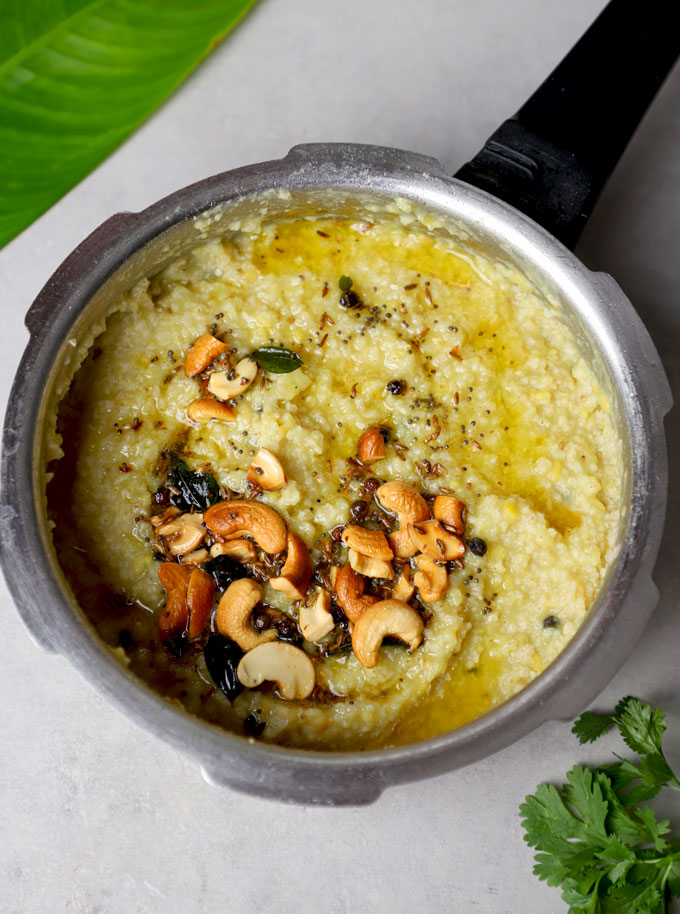

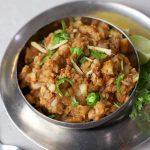

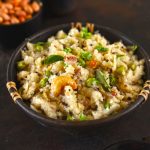
Leave Your Rating & Comment